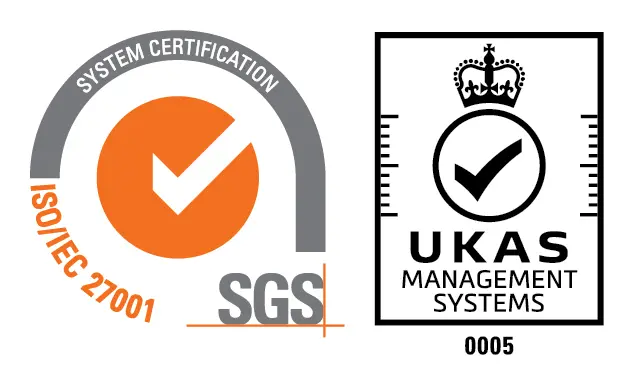Vibe Coding: How AI Coding Tools are Reshaping Software Development

- Affan Ahmed
Introduction
Vibe coding is an emerging software development approach powered by AI coding tools, prompt-based coding, and natural language programming. Instead of writing every line of code, developers are now guiding tools like GitHub Copilot and Replit AI with conversational inputs—a style known as prompt-based coding.Vibe Coding: How AI Coding Tools are Reshaping Software Development
Vibe coding is an emerging software development approach powered by AI coding tools, prompt-based coding, and natural language programming. Instead of writing every line of code, developers are now guiding tools like GitHub Copilot and Replit AI with conversational inputs—a style known as prompt-based coding.
What if you never had to write a line of code again?
Just a few years ago, building a working app required time, a team, and a decent amount of technical knowledge. Today, that process is being radically compressed. With the right AI tools, a person can single-handedly prompt the creation of a full-stack app in under an hour.
We’re seeing it across Twitter, Product Hunt, and indie dev communities, founders launching products over a weekend, designers turning Figma files into deployable React apps, and creators bootstrapping profitable SaaS projects with almost no manual coding. It’s fast. It’s messy. But it’s undeniably real.
This isn’t just about speed, it’s about a shift in who can build software and how.
The term that is emerging to describe this shift is vibe coding. It captures the feeling of flow when using AI tools like GPT-4, Copilot or Replit Agents to guide and scaffold the entire development process. The code may not always be perfect, but the path from idea to product has never felt so direct.
What is Vibe Coding and How AI Coding Tools Power it
The concept of “vibe coding” began gaining traction when AI researcher Andrej Karpathy introduced the phrase to describe a shift in how software is built. It’s less about writing code line by line and more about describing what you want in plain language and letting the AI figure out the rest. The AI then interprets the intent and generates the code, often across multiple files or services.
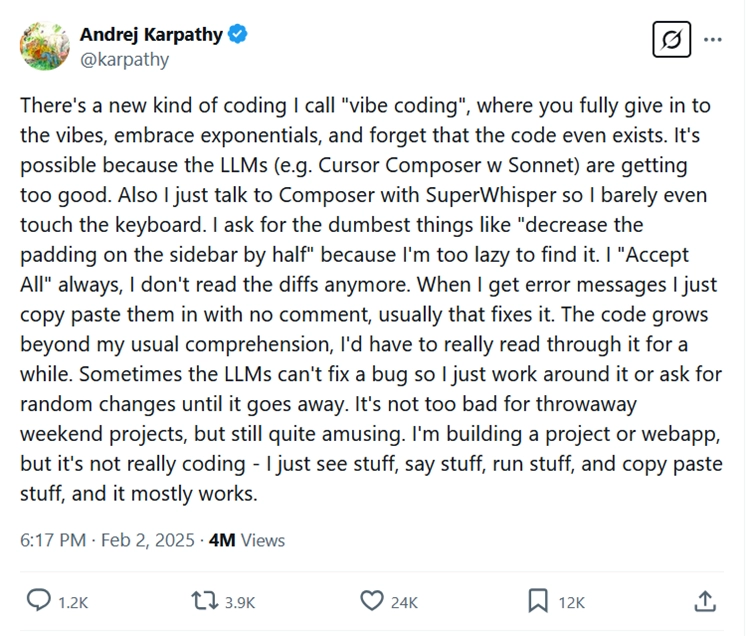
At its core, vibe coding is about replacing syntax with storytelling. You don’t need to memorize method names or worry about framework-specific boilerplate anymore. Instead, you simply describe what you want, such as “build an auth system with email verification” or “create a dashboard for real-time product analytics,” and the AI takes care of turning that into working code.
This is a prime example of LLM-powered coding, where the model acts as an interpreter between human intention and executable code. They understand the structure, patterns, and best practices from both public and proprietary codebases, enabling them to produce clean and usable code for real-world applications.
Early signs of this shift began with autocomplete tools like GitHub Copilot, one of the most popular AI coding tools used in AI-assisted software development today. But the modern evolution includes tools like Cursor, Replit AI, and Copilot Workspace, which can manage entire codebases, refactor architectures, and even generate backend and frontend code together in response to conversational prompts.
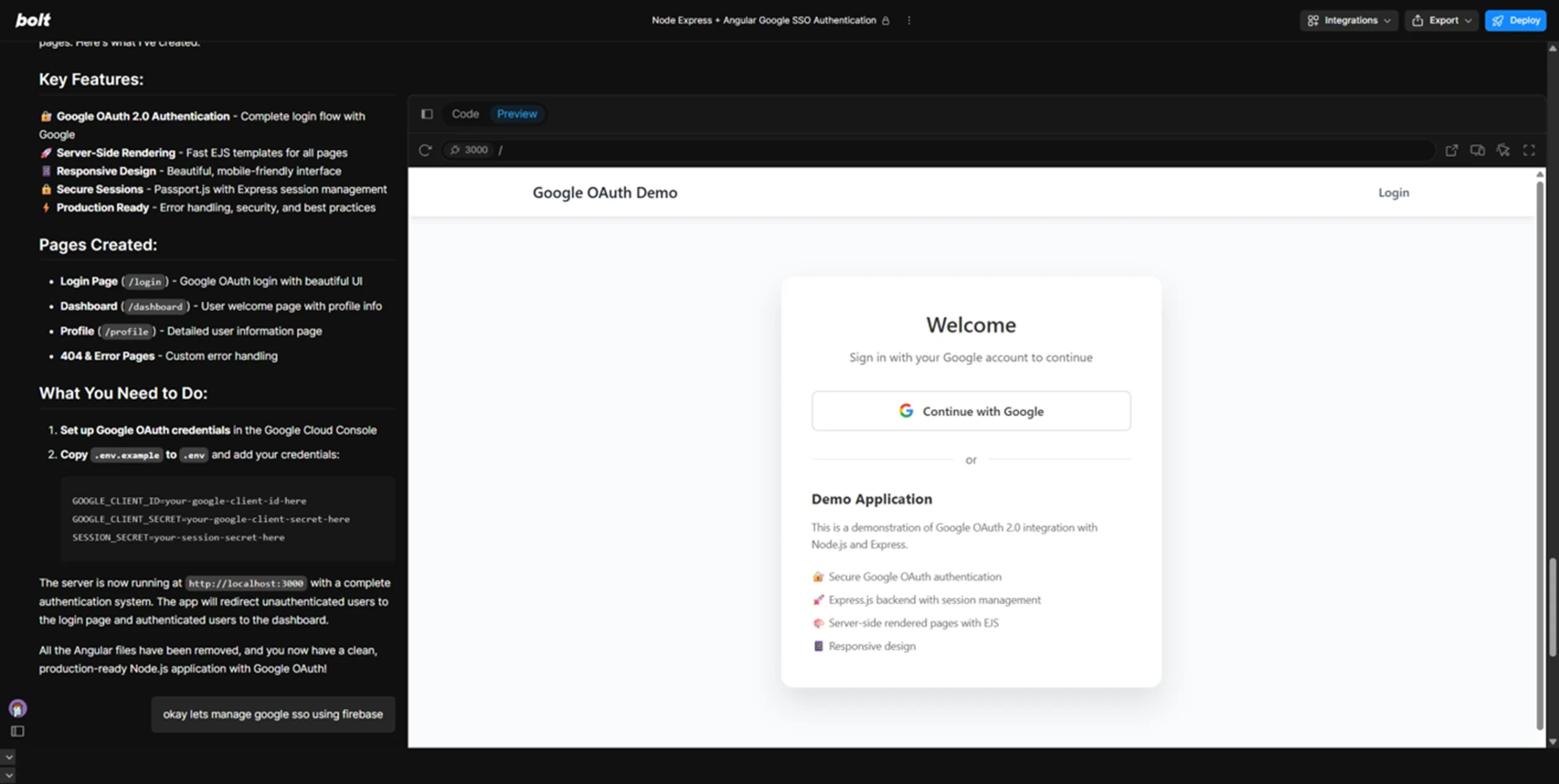
Google OAuth app scaffold by bolt.new
As Karpathy noted in a developer Q&A, “The hottest new programming language is English.” And that idea is becoming the foundation for how a new generation of developers approaches software creation.
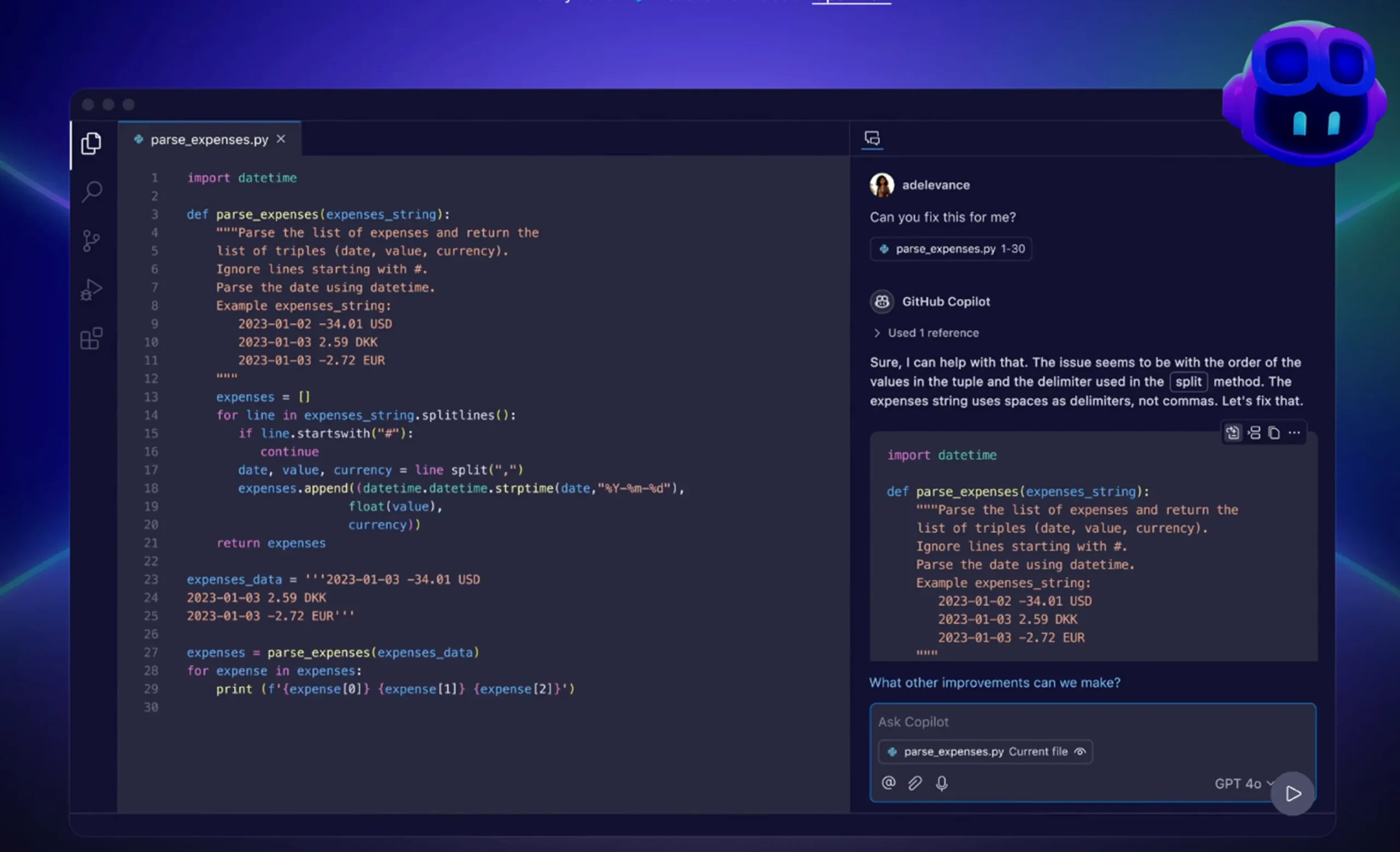
Why Vibe Coding and AI Developer Tools Are Gaining Traction
What started as a novel experiment is now a full-blown movement, driven by a combination of startup momentum, enterprise interest, and cultural adoption within the developer community.
The last year has seen a surge in venture capital backing AI-native developer tools. Platforms like Cursor and Lovable are closing multi-million dollar funding rounds to build assistants that go beyond autocomplete and act more like AI teammates. Investors aren’t just betting on tools, they’re betting on a shift in how software will be built in the next decade.
Hackathons and demo days now regularly feature solo developers launching entire SaaS apps over a weekend. Virtual events like the Vibe Coding Summit brought together thousands of founders, indie hackers, and engineers to showcase tools and workflows that reduce multi-month projects to a few focused sessions, powered by prompts.
Enterprises are embedding AI-assisted software development into CI/CD pipelines to accelerate dev cycles, reduce headcount dependency, and scale output efficiently. Tools like GitHub Copilot Enterprise and AWS Q Developer are being integrated into internal dev environments to accelerate delivery timelines. According to HCLTech, major enterprise teams are quietly reorganizing workflows to accommodate natural language prompting as part of their day-to-day development process.
Spend a few minutes on Reddit, LinkedIn, or some indie builder forums, and you’ll notice the shift. What started out feeling like a shortcut or a toy is now being taken seriously. More and more developers, especially early-stage founders and technical project managers, are using vibe coding as a practical way to ship real products, fast.
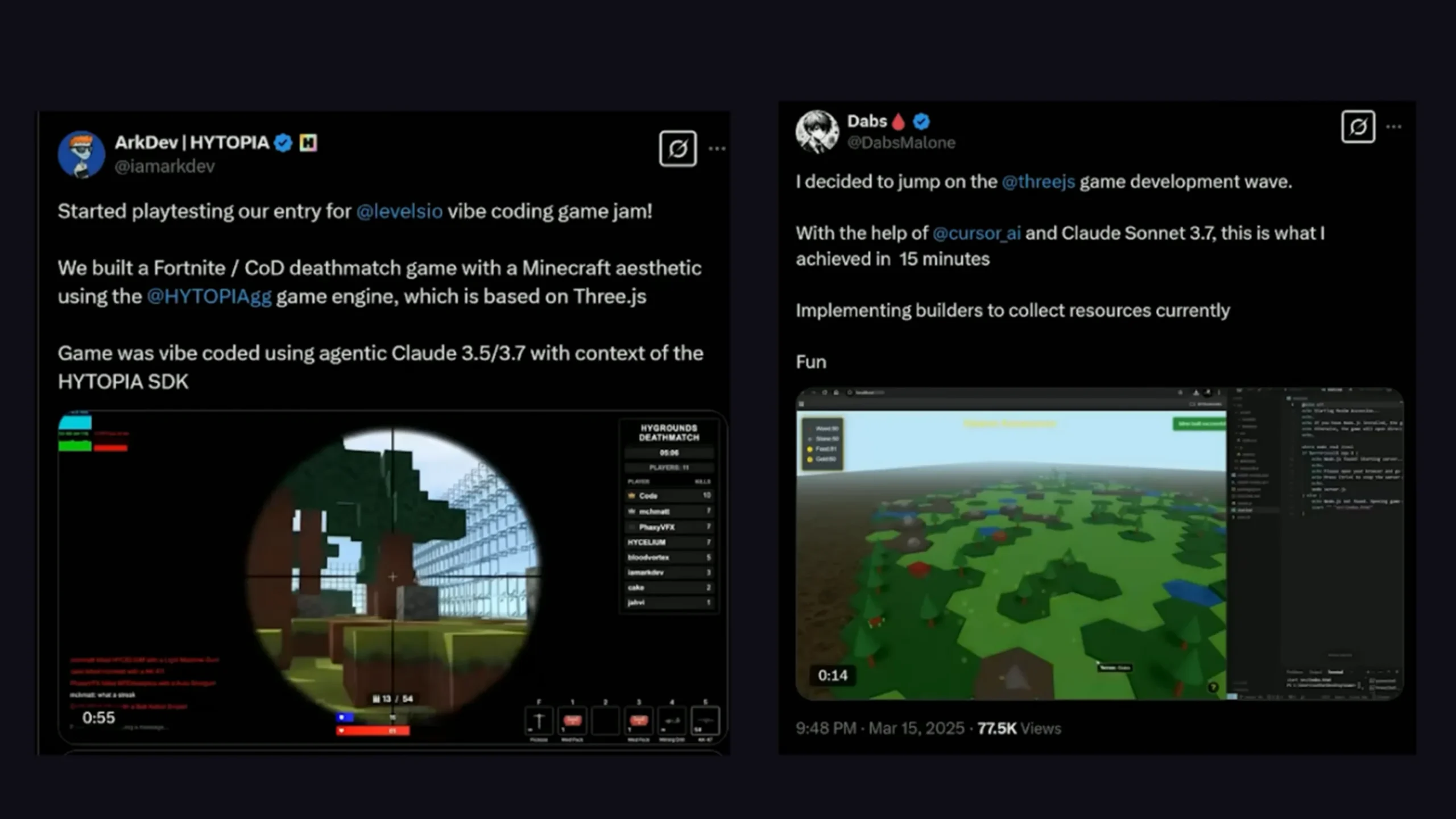
How AI Coding Tools Boost Productivity in Vibe Coding
One of the most immediate benefits of vibe coding is speed. Tasks that used to take hours or days, such as scaffolding components, wiring APIs, and designing interfaces, can now be done in minutes. This has significantly lowered the barrier to entry for solo builders, indie founders, and even non-traditional developers.
AI tools help developers move straight from idea to implementation. Want to test a product onboarding flow? These kinds of tasks used to require frontend specialists, but natural language programming and AI coding tools now allow solo devs to build feature-rich flows using simple prompts. This is a huge productivity win made possible by LLM-powered coding tools that convert abstract requirements into functional code across multiple layers. You can now describe it and generate a working multi-step form with client-side validation and backend integration in one go. Need a prototype to show investors? Prompt an LLM with your user story, and it will deliver a working MVP that can be deployed the same day.
This efficiency isn’t limited to frontend apps. Developers are using vibe coding to spin up complete backend services, configure databases, manage cron jobs, and deploy scalable infrastructure all through conversational interfaces. Being able to build and test ideas this quickly makes it easier to experiment and refine them. It removes a lot of the usual friction that slows down early-stage product design.
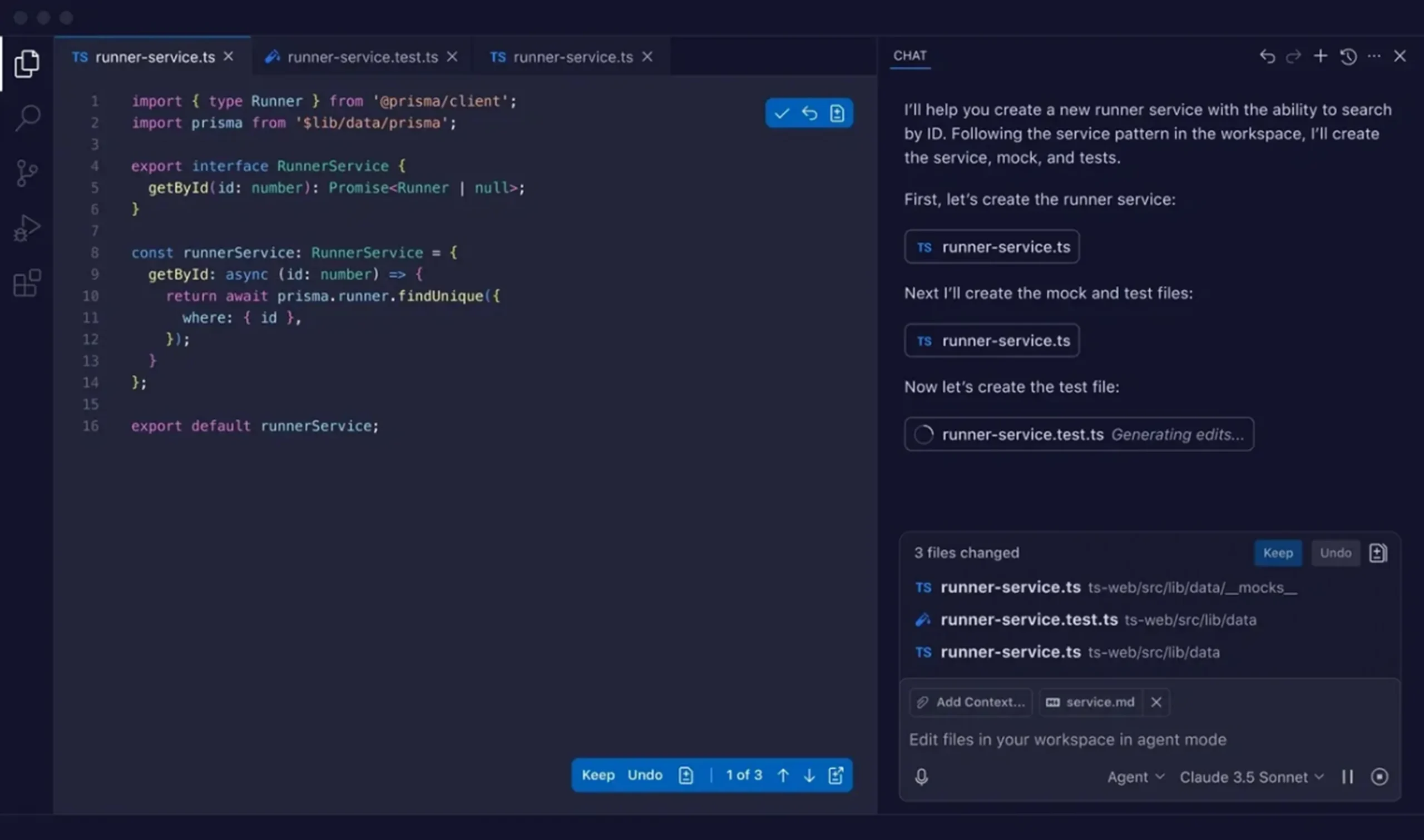
Copilots in action
Recent surveys indicate that teams utilizing AI in their workflows are experiencing a two-to-threefold improvement in development speed, a shift that’s hard to ignore. Junior developers are learning faster. Senior engineers are focusing more on architecture and review. Startups are launching with smaller teams but shipping faster.
This is also enabling a form of software democratization. People without a deep technical background are now using tools like Replit, Lovable, and Bolt to turn simple sketches or ideas into actual working apps. The results aren’t always perfect, but the shift is clear: building software is no longer something only engineers can do.
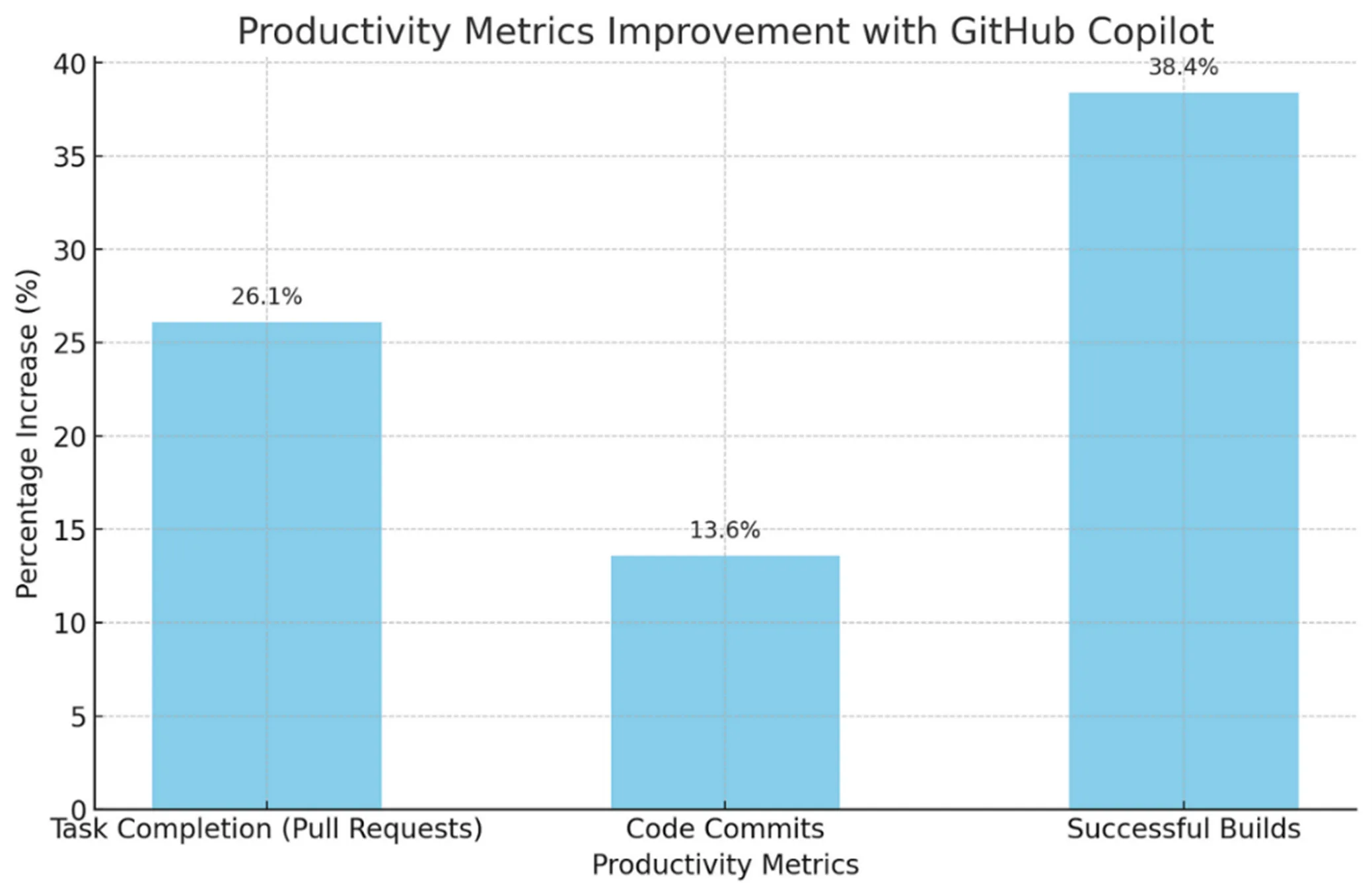
Risks and Caveats
As promising as vibe coding is, it comes with significant risks, many of which are easy to overlook in the rush to ship faster.
The most immediate concern is code quality and security. Because AI-assisted software development bypasses traditional QA steps, developers must take extra care to validate the output from AI coding tools, especially when building authentication, permissions, or financial logic. Generated code may appear functional but often lacks proper error handling, fails edge cases or introduces silent vulnerabilities. Without careful review, developers risk pushing insecure logic into production environments. This is especially critical when AI handles authentication, user permissions or payment flows.
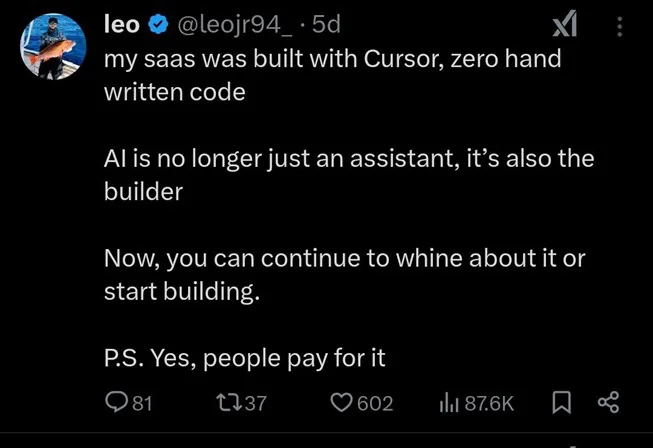
A notable example surfaced on X earlier this year when an indie founder @leojr94_ proudly showcased a SaaS product they built in a single day using AI tools. The app gained traction quickly but lacked proper access control and rate limiting. Within days, it was exploited, taken offline and the founder reported losing both data and paid users. The story caught a lot of attention from the developer community realizing the dangers of shipping too fast without basic safeguards.
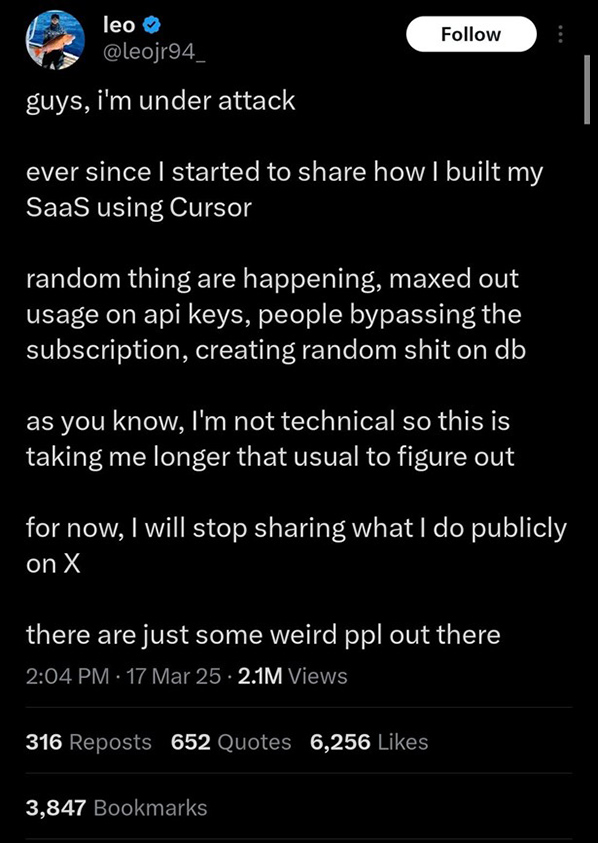

Debugging is one of the biggest sticking points for non-technical users. When something breaks, it is often unclear what caused the issue or how to resolve it. In traditional coding, error messages or logs usually provide some direction. But with AI-generated code, that context is often missing. The result? Users get stuck mid-build with no obvious way forward.
There are also issues around scalability. Vibe coding makes it easy to get an MVP up and running quickly, but many of the solutions it generates aren’t built to last. Without a solid structure, things like modular design, testing, or version control, the code can become fragile fast. When too much of a project is handed over to AI, technical debt can begin to accumulate quietly in the background. It may not be obvious in the early stage, but as the product grows, that debt becomes harder to manage and even harder to unwind.
And lastly, there’s the risk of commoditization. When thousands of builders are using the same tools, prompts, and workflows, the originality of what’s being built can begin to blur. AI is great at speeding things up, but without a clear vision or creative direction, it can just as easily lead to cookie-cutter products.
How to Vibe Code Responsibly
Vibe coding opens a lot of possibilities, but speed should never come at the cost of quality. If you are using AI tools to help ship software, there are a few habits worth developing to ensure reliability, maintainability, and production readiness.
Start by being specific with your prompts. The more clearly you describe what you want from it, the better the results it can provide in return. Instead of saying “write an API,” try something like “build a REST API with JWT authentication and input validation for a user signup form.” The details matter! Especially when you are handing off the task to a model that doesn’t know your tech stack or edge cases, unless you explain it thoroughly.
Break things into parts. Divide & Conquer! Resist the urge to generate an entire app in one go. It is usually a better approach to break down larger objectives into smaller, modular pieces, such as login flow, dashboard UI, or analytics logic. This makes the code easier to manage, test, and update later.
Even with AI coding tools handling much of the scaffolding, prompt-based coding requires developers to think critically about architecture, edge cases, and maintainability. The version control is non-negotiable. Use Git from the start. Keep your commits clean, write proper messages, and maintain branches like you would on any team project. It helps you stay organized, especially when working quickly or with others.
Set up automated checks early. A solid CI/CD pipeline can catch bugs, formatting issues, or broken logic before they become bigger problems. Tools like GitHub Actions or Vercel’s integrations make the process straightforward, and many other AI dev tools can scaffold tests too, so take advantage of that.
Always review the code. Whether you are working solo or with a team, treat AI-generated output like a draft. Read through it, test it, and do not assume it’s the absolute final. Tools like ESLint, TypeScript, or runtime validators can help spot subtle mistakes. Think of AI as an enthusiastic junior developer. It works fast but still needs oversight.
At last, don’t forget compliance. If your app handles user data, payments, or sensitive workflows, ensure it meets standards such as GDPR, PCI-DSS, or SOC2 as well. This is because AI won’t be aware of your legal requirements unless you explicitly include them in the prompt.
Future Outlook
Vibe coding is rapidly moving from novelty to infrastructure. What started as simple prompt-to-code tools is quickly turning into something much more powerful: autonomous AI agents that can work across the entire software lifecycle. Instead of just spitting out code snippets one prompt at a time, these next-gen tools are learning to collaborate.
They can understand how different parts of a codebase fit together, follow architectural patterns, and even take initiative by refactoring components or optimizing queries based on their goals. It is less about asking for code and more about working alongside systems that help you shape it.

Pattern enhancing the strength of Agents by integrating the use of tools.
Recent research from teams at Stanford and Microsoft has demonstrated how LLM-powered agents can autonomously execute multi-step plans to build and test software. In one study, agents were able to identify bugs, write integration tests, and re-deploy services with minimal human input (arxiv.org/abs/2505.19443).
This shift means that the role of the developer is also evolving. Instead of writing logic line by line, developers are increasingly acting as system architects, reviewers, and prompt engineers. Their focus is on clearly defining the problem, guiding the AI effectively, and ensuring the output meets performance, security, and usability standards.
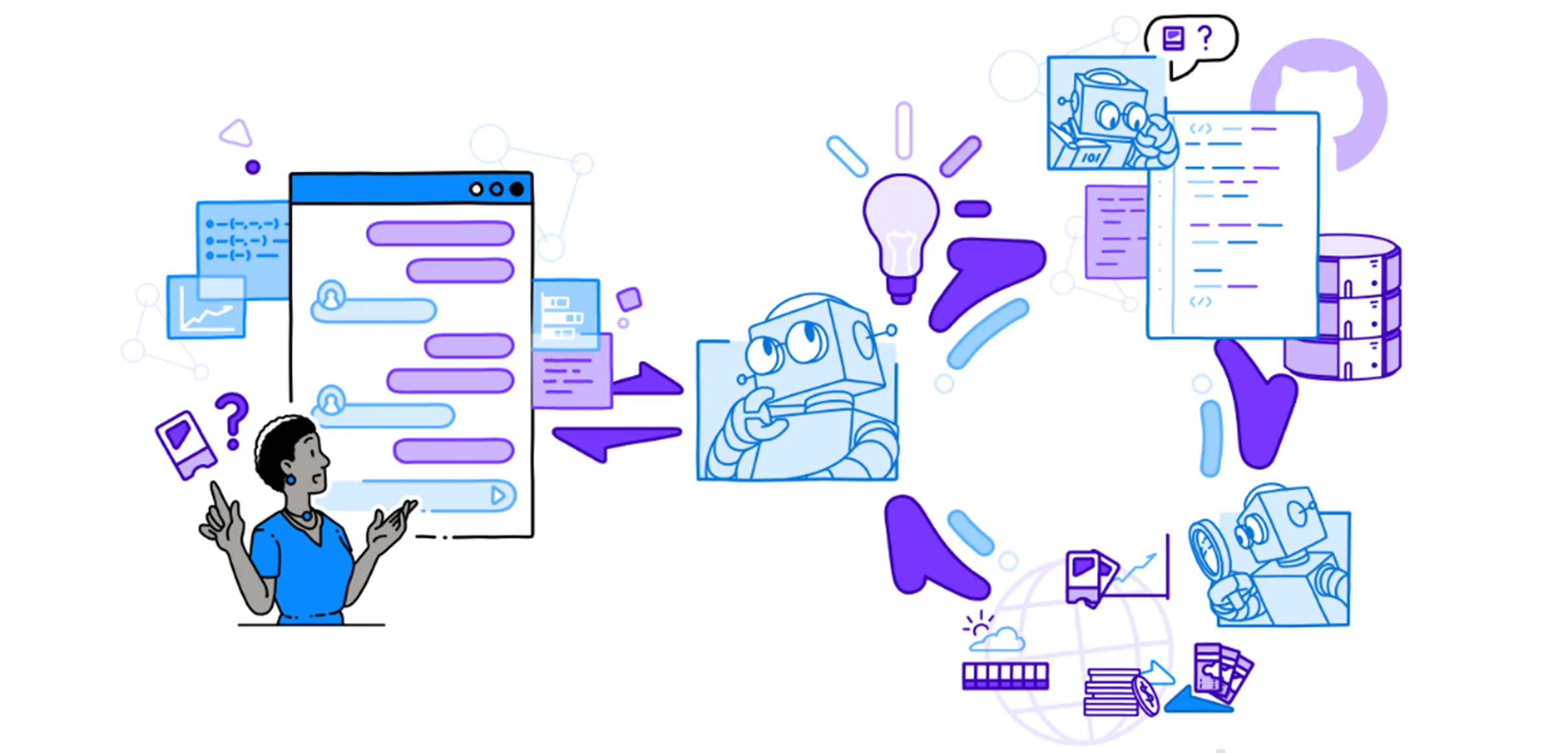
For enterprise teams, this opens the door to embedding vibe coding directly into internal pipelines. Picture a development pipeline where you describe a feature in plain English and the system takes it from there, generating the code, running the tests, reviewing for quality, and deploying it to staging without manual intervention. These kinds of workflows are no longer theoretical. They are already in use at some fast-paced startups and are beginning to appear in enterprise environments as well.
The exact future of software development is still unfolding, but one thing is clear: coding through language is no longer a novelty. It’s becoming the new standard. And the developers and teams who lean into it now are likely to see that early adoption pays off fast.
Call to Action
Vibe coding is no longer a future concept. AI-assisted coding is already reshaping how products come to life from the first idea to shipping real features. Whether you’re working at a startup, part of an enterprise team, or just building on weekends for fun, now is the perfect time to get hands-on and see what this shift means for your workflow.
Start by trying out tools like Cursor, Replit AI, Lovable, or Windsurf. Pick a small feature or idea, describe it in natural language, and see how far you can get. Pay attention to the output, what it gets right, what it struggles with, and compare it to how you’d normally approach the same task. You might be surprised by how much time you save or how much clearer your thinking gets when you focus on describing the outcome instead of writing every line.
If you are working on a team or running a quick AI-assisted hackathon. Set a time limit or focus on a specific challenge and watch how the team uses AI in real-time. It is not just a fun experiment; instead, it is a great way to uncover new ways of working and rethink how collaboration could look in the future.
The tools are here, and the momentum is real. The sooner you start experimenting, the better you will be positioned to lead and not just follow, as this new way of building software continues to grow.
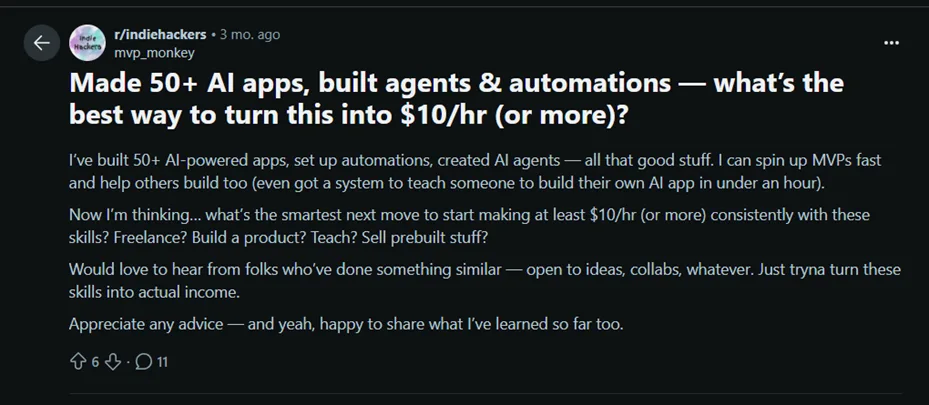
Publishing or polishing your learnings online
Most importantly, share what you learn with your online pals. Publish the demos. Open source some templates. Write about your failures and insights. The vibe coding community is still in its early days, and what it becomes will depend on how we build it together. Shared experiences, experiments, and even the roadblocks will shape the tools, workflows, and standards of this new approach to software development. It isn’t going anywhere and isn’t stealing your job for now; it’s the part where you leverage it to meet your own needs.
The future of software development is already here, and AI coding tools, as well as the rise of vibe coding, drive it. Whether you’re a solo founder or an enterprise engineer, now is the time to explore how natural language programming can change the way you build.
The best way to understand where it’s headed. Jump in and start building.

Affan Ahmed
Affan Ahmed works as a Software Engineer at TenX
Global Presence
TenX drives innovation with AI consulting, blending data analytics, software engineering, and cloud services.
Ready to discuss your project?





